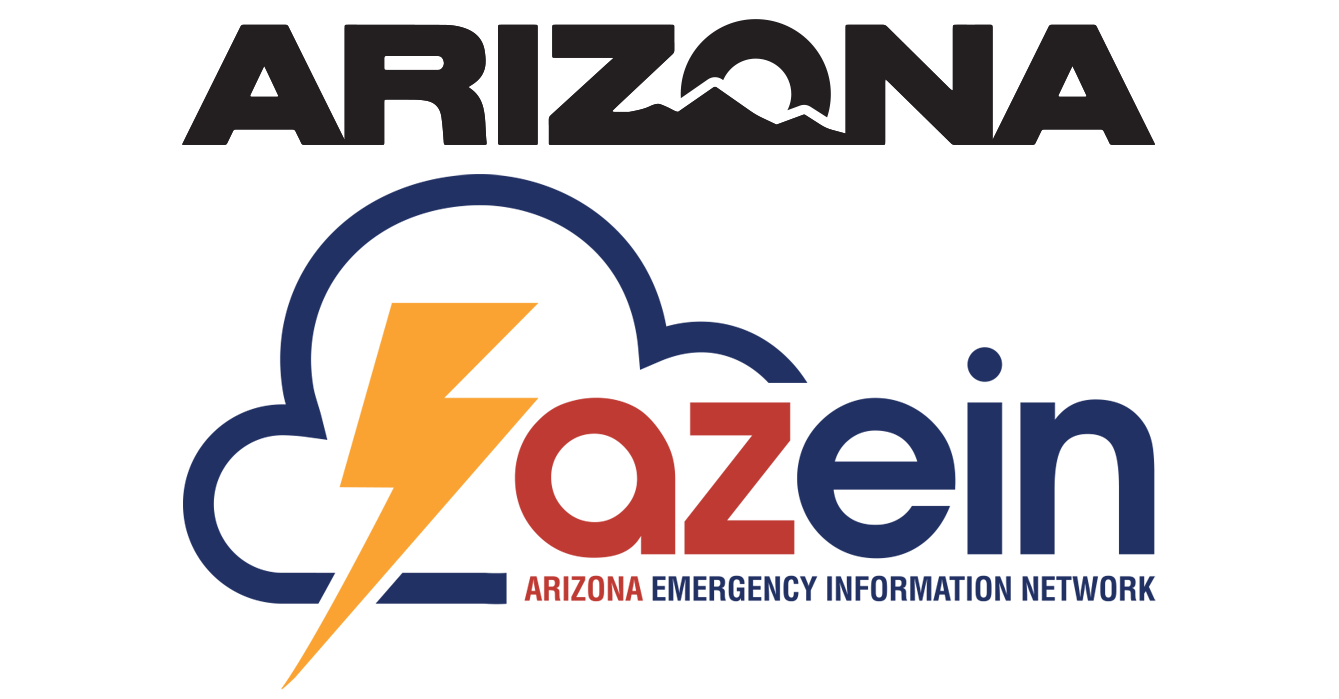Flooding
Flooding, the temporary overflow of water onto land that is normally dry, is the most common hazard in the United States and Arizona. Failing to evacuate flooded areas, entering flood waters, or remaining after a flood has passed can result in injury or death. Floods can be local, impacting a neighborhood or community, or very large, affecting entire river basins and multiple states. Flooding can cause power outages, traffic issues, damage to buildings and landslides.
Floods may develop slowly over time, or quickly with no warning as in a flash flood. Flash floods often have a dangerous wall of roaring water carrying rocks, mud and other debris.
Anywhere it rains, it can flood. Be aware of flood hazards no matter where you live or work, but especially if you are in low-lying areas, near water, behind a levee or downstream from a dam. Even small streams, gullies, creeks, culverts, dry streambeds or low-lying ground that appear harmless in dry weather can flood.
BEFORE
Familiarize yourself with these terms to help identify a flood hazard:
- Flood Watch—Flooding is possible. Tune in to NOAA Weather Radio, commercial radio or television for information.
- Flash Flood Watch—Flash flooding is possible. Be prepared to move to higher ground; listen to NOAA Weather Radio, commercial radio or television for information.
- Flood Warning—Flooding is occurring or will occur soon; if advised to evacuate, do so immediately.
- Flash Flood Warning—A flash flood is occurring; seek higher ground on foot immediately.
- Build an emergency go kit and make a family communication plan.
- Know types of flood risk in your area. Visit FEMA’s Flood Map Service Center for information.
- Sign up for your community’s warning system. The Emergency Alert System (EAS) and National Oceanic and Atmospheric Administration (NOAA) Weather Radio also provide emergency alerts.
- Keep important documents in a waterproof container. Create password-protected digital copies.
- Protect your property. Move valuables to higher levels. Declutter drains and gutters. Install check valves. Consider a sump pump with a battery.
- Purchase or renew a flood insurance policy. It typically takes up to 30 days for a policy to go into effect and can protect the life you've built. Homeowner’s policies do not cover flooding. Get flood coverage under the National Flood Insurance Program (NFIP)
DURING
- If told to evacuate, do so immediately. Never drive around barricades. Local responders use them to safely direct traffic out of flooded areas.
- Listen to the Emergency Alert System, NOAA Weather Radio or local alerting systems for current emergency information and instructions.
- Be aware of stream, drainage channels, canyons and other areas known to flood suddenly. Flash floods can occur in these areas with or without typical warnings such as rain clouds or heavy rain. Move immediately to higher ground.
- Do not walk through moving water. Six inches of moving water can make you fall. If you have to walk in water, walk where the water is not moving. Use a stick to check the firmness of the ground in front of you.
- Do not drive into flooded areas. If floodwaters rise around your car, abandon the car and move to higher ground if you can do so safely.
- Just six inches of moving water can knock you down, and one foot of moving water can sweep your vehicle away.
- Stay off of bridges over fast-moving water.
- Do not camp or park your vehicle along streams, rivers or creeks, particularly during threatening conditions.
- If trapped in a building, then go to its highest level. Do not climb into a closed attic. You may become trapped by rising floodwater. Go on the roof only if necessary. Once there, signal for help.
AFTER
- Listen to authorities for information and instructions. Return home only when authorities say it is safe.
- Use local alerts and warning systems to get information and expert advice.
- Avoid moving water.
- Avoid driving, except in emergencies.
- Stay away from damaged areas unless your assistance has been requested by police, fire, or a relief organization.
- Stay off the roads and out of the way of emergency workers.
- Listen for local warnings and information.
If you must walk or drive in areas that have been flooded:
- Stay on firm ground. Moving water only 6 inches deep can sweep you off your feet. Standing water may be electrically charged from underground or downed power lines.
- Use extreme caution when entering buildings; there may be hidden damage, particularly in foundations.
- Be aware of the risk of electrocution. Do not touch electrical equipment if it is wet or if you are standing in water. If it is safe to do so, turn off the electricity to prevent electric shock.
RESOURCES
- Repairing Your Flooded Home
- After a Flood: The First Steps
- Homeowner’s Guide to Retrofitting: Six Ways to Protect Your House from Flooding
- About the Flood: Elevating Your Floodprone House
- Protecting Building Utilities From Flood Damage
- National Weather Service
- Arizona Weather Dashboard
- National Flood Insurance Program
- Post-flood mold
- Post-flood cleanup and remediation
(source: Ready.gov)

